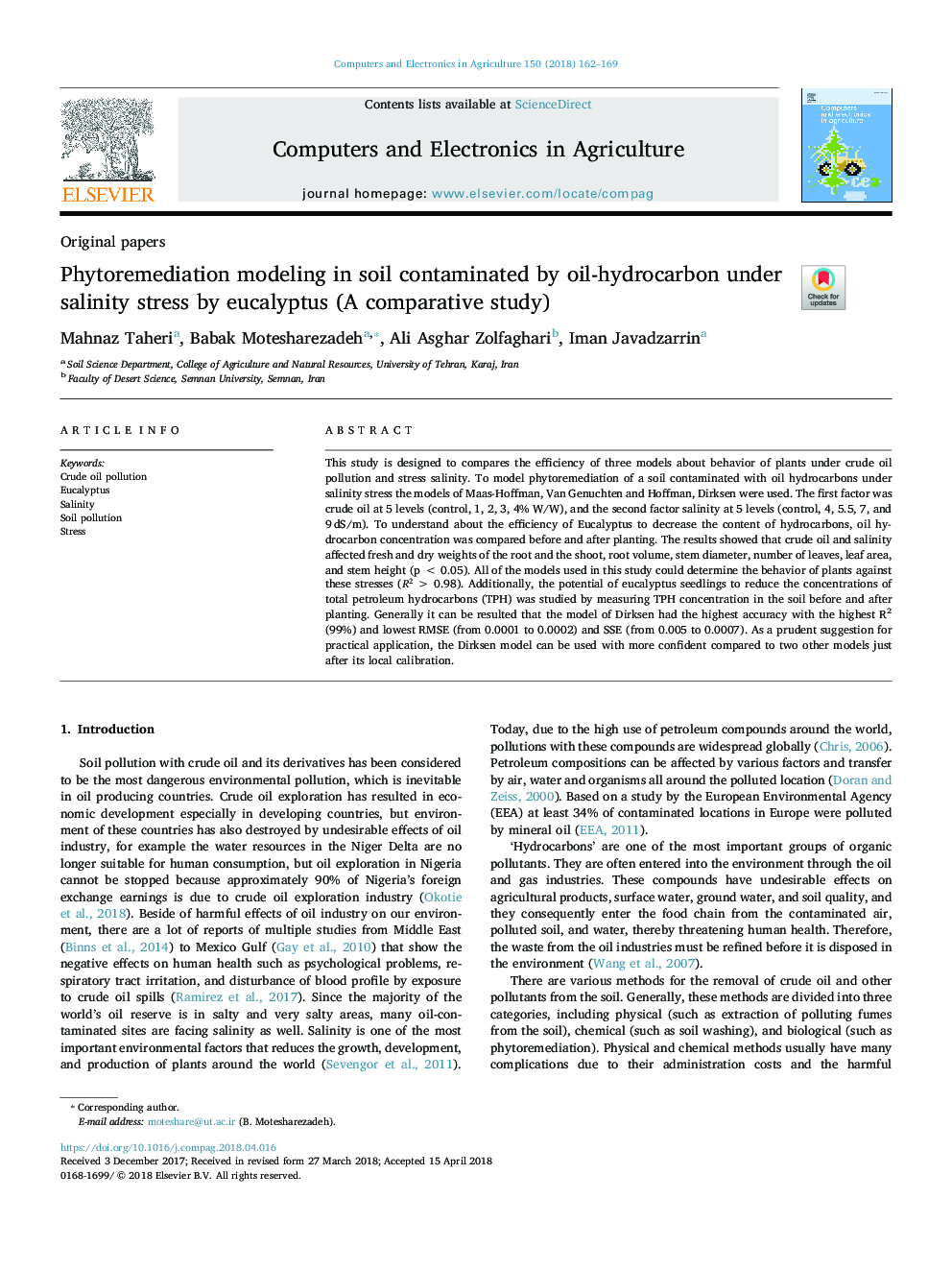| Article ID | Journal | Published Year | Pages | File Type |
|---|---|---|---|---|
| 6539372 | Computers and Electronics in Agriculture | 2018 | 8 Pages |
Abstract
This study is designed to compares the efficiency of three models about behavior of plants under crude oil pollution and stress salinity. To model phytoremediation of a soil contaminated with oil hydrocarbons under salinity stress the models of Maas-Hoffman, Van Genuchten and Hoffman, Dirksen were used. The first factor was crude oil at 5 levels (control, 1, 2, 3, 4% W/W), and the second factor salinity at 5 levels (control, 4, 5.5, 7, and 9â¯dS/m). To understand about the efficiency of Eucalyptus to decrease the content of hydrocarbons, oil hydrocarbon concentration was compared before and after planting. The results showed that crude oil and salinity affected fresh and dry weights of the root and the shoot, root volume, stem diameter, number of leaves, leaf area, and stem height (pâ¯<â¯0.05). All of the models used in this study could determine the behavior of plants against these stresses (R2â¯>â¯0.98). Additionally, the potential of eucalyptus seedlings to reduce the concentrations of total petroleum hydrocarbons (TPH) was studied by measuring TPH concentration in the soil before and after planting. Generally it can be resulted that the model of Dirksen had the highest accuracy with the highest R2 (99%) and lowest RMSE (from 0.0001 to 0.0002) and SSE (from 0.005 to 0.0007). As a prudent suggestion for practical application, the Dirksen model can be used with more confident compared to two other models just after its local calibration.
Related Topics
Physical Sciences and Engineering
Computer Science
Computer Science Applications
Authors
Mahnaz Taheri, Babak Motesharezadeh, Ali Asghar Zolfaghari, Iman Javadzarrin,
